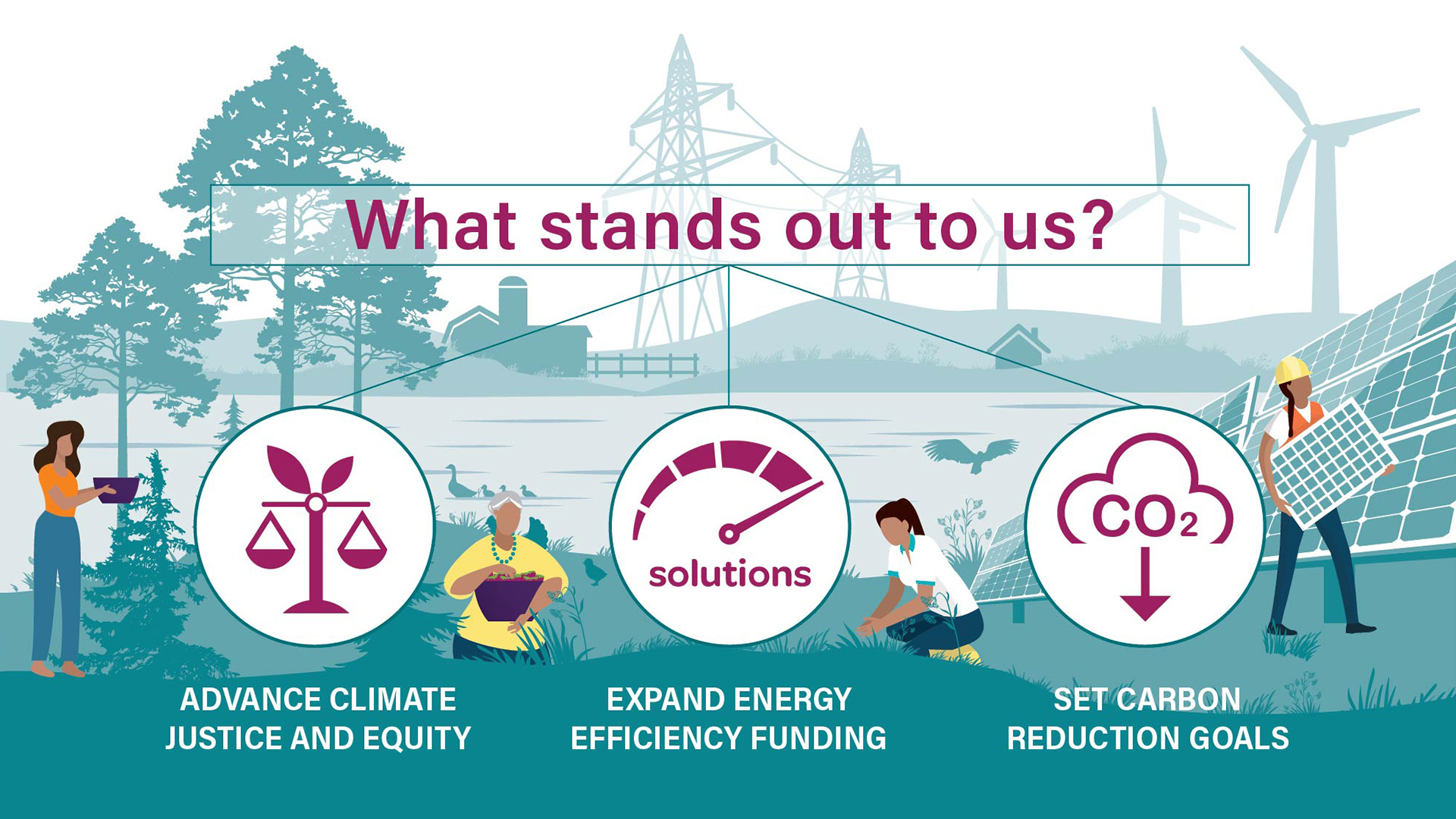
Three climate solutions from the Wisconsin Governor’s Task Force on Climate Change Report that excite us
This month, the Badger State achieved a climate action milestone as the Governor’s Task Force on Climate Change released an expansive new outline for how Wisconsin plans to address this important crisis. The report follows Governor Tony Evers' 2019 executive order establishing the Task Force, which charged the new group to develop a strategy to mitigate the effects of climate change for the benefit of all Wisconsinites.
Chaired by Lieutenant Governor Mandela Barnes, the bipartisan and diverse coalition included representatives from agriculture, business, Native Nations, utilities, labor, academia, youth, and environmental advocates. The Task Force's full Climate Change Report lays out 55 solutions through which the state intends to address our climate crisis. Each action might involve one or more of three policy pathways—executive order, the state budget, or legislation. And many of them already align with the trends we here at Slipstream know can help us accelerate climate solutions for all.
Together, the recommended solutions make us confident that we—as both Wisconsinites and Slipstreamers—can bring the innovations and programs to take on our climate challenges for our shared benefit. Among the Task Force’s possibilities, three stand out to us as exceptionally promising.
1. Create an Office of Environmental Justice
Any climate plan worth its salt must address issues of equity and affordability, as a clean-energy economy cannot leave our most vulnerable communities behind. An official government office will give this issue the space and visibility necessary to advance climate justice and equity in Wisconsin. The strategy proposed would require the office to collaborate across state agencies and with Black, Indigenous and communities of color, low-income communities, and environmental justice advocates.
This coalition would then work together to design climate policies that reduce emissions and pollutants and address the cumulative and disproportionate impacts of their concentration in these communities. Crucially, this office would also prioritize consultation with our Native Nations, mandating long-overdue projects such as a racial disparity impact study, anti-racism education, and more.
2. Expand Focus on Energy funding
The programs funded through Wisconsin’s Focus on Energy programs are extremely effective at implementing a climate strategy. By expanding Focus on Energy, we will be able to accelerate solutions such as beneficial electrification, which improves end-use efficiency while we make progress toward a decarbonized grid. Efficiency is the lowest-cost energy resource, and Wisconsin has a long and successful track record of transforming markets without breaking the bank. We should build on this history to reach our true potential.
3. Set carbon reduction goals
Setting these goals will significantly enhance Wisconsin’s ability to manage its carbon budget and measure progress. Whereas transportation has become the largest source of energy-related emissions nationally, the electric power sector is still the greatest source of Wisconsin’s energy-related emissions. Carbon is the right thing to measure—and the electric sector is the right place to measure it—as we aim ever-higher in our efforts to tackle climate change.
It’s exciting to witness Wisconsin renew its commitment to clean energy and climate change mitigation. Thank you to our leaders, the Task Force and subcommittee members, and those who supported their contributions. Check out the complete set of recommended solutions in the Governor's Task Force on Climate Change Report.